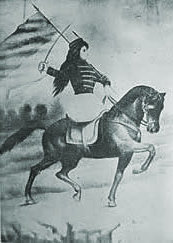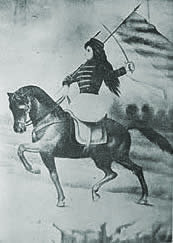
|
Women and Independence in Latin America An exploration of women's involvement in the Latin American Wars of Independence |

|

|
Women and Independence in Latin America An exploration of women's involvement in the Latin American Wars of Independence |

|
Gender:Female
Ethnic origen: Unknown
Events:
| 1795 | - | Oruro | - | Not applicable | - | She was born here. |
| 1812 | - | Potosí | - | Unknown | - | She was exiled here after 1812 and remained until 1825. |
| 1812 | - | Cochabamba | - | Unknown | - | She fought with the women of Cochabamba in the taking of Cerro de San Sebastián, Cochabamba, 27 May 1812. |
| 1825 | - | Potosí | - | Patriot | - | She took part in the independence celebrations on 26 October 1825. |
| 1870 | - | Bolivia | - | Unknown | - | She died in December 1870. |
| 1870 | - | Bolivia | - | Unknown | - | She participated in the revolution of 1870 - a meeting took place in her house between her sons colonels, Andrés Rivas and Delfín Sagárnaga, and General Rendón. |
Connections:
Women exiled independence causeBiography:
From the distinguished family of Villa de San Felipe de Austia, she was the daughter of Martín de la Tapia from Oruro, Bolivia. Her father recognised that she was highly intelligent and carefully educated her. She married Buenaventura Antezana, shortly before the wars of independence broke out and they had one daughter, María Antonia. Antezana and de la Tapia became patriots. She fought with the women of Cochabamba in the taking of Cerro de San Sebastian on 27 May 1812. She was persecuted and captured after the battle and exiled to Potosí and held in the house of Quintanilla, an extreme royalist, opposite Santa Domingo. When Potosí was liberated on 26 October 1825, she took part in a dance and sang Carabobo's triumphant march at the bottom of the column of liberty. Her intellect, interest in politics and culture led to friendships with eminent Bolivians such as Olañeta, Cortés, Bustillo, General José Balliván and General Manuel Sagárnaga, who looked to her as a source of wisdom and patriotic inspiration. She also took part in the 1870 revolution - a meeting took place in her house between her sons colonels, Andrés Rivas and Delfín Sagárnaga, and General Rendón. She died in December 1870 in her 80s. (Urquidi, 225-227)
Related by marriage to Juana de Dios Barbieto de Antezana?
References:
Urquidi, José Macedonio (1918) Bolivianas ilustres, heroinas, escritoras, artistas, Tomo I